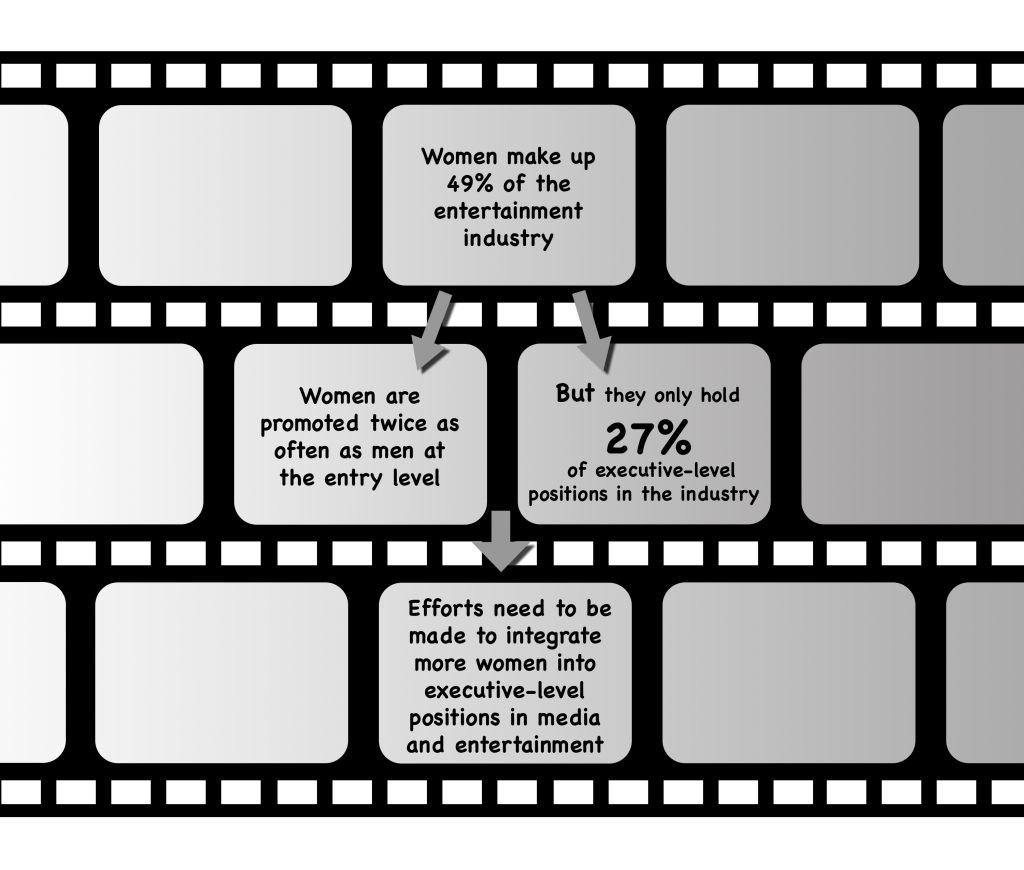Imagine a Supreme Court Justice or a computer scientist. Who do you see? Most likely, you’ve pictured a white man. Your vision reflects what you see on television, and in turn, this image shapes what you choose to become. Even at Berkeley High School (BHS), only seven out of 30 students in an Advanced Placement (AP) Computer Science class this year are girls, and sophomore Maya Cobb said there were only five girls in her Intro to Computer Programming course last year. These are shockingly low numbers, and perhaps they can be attributed to the lack of women in positions of power in the media and entertainment industry.
Women make up roughly half of the people in the entertainment industry, and at the entry-level they appear to be doing pretty well, being promoted twice as often as men. Yet they account for only 27 percent of chief executives in those fields. These statistics are due to sexism, according to a McKinsey study which observed that women in media and entertainment “experience a more hostile workplace than men and face a glass ceiling that prevents them from reaching top leadership roles.” Nearly half of the 1,700 employees who took part in the survey agreed that women are held to different standards in this profession, and 34 percent of the women surveyed even revealed that they had witnessed prejudice towards their gender within the past year alone.

The dearth of women in the highest media positions has dire consequences for gender equality, because what we view inevitably affects our perception of the world and those around us. Back in 2002, a study published in Science found that children will have spent more time watching television than in classrooms by the end of high school, and a more recent survey by Common Sense Media reveals that American teens spend approximately 9 hours every day using media. This demonstrates the powerful role of the media in socialization.
But if the highest media positions are filled by men, it is less likely that accurate portrayals of women will be projected. An analysis of family films showed that less than 5 percent of executives and high-level politician characters were women, and found zero female editor-in-chiefs, investors, or chief justice characters. Moreover, only 16 percent of STEM characters were women. Instead of seeing girls pursuing science, you see princesses pursuing romance. In fact, out of the 13 female protagonists in animated movies between 1937 and 2005, all but one were aspiring to find love. If these are the role models little girls see when growing up, the stereotypes pinning girls down will just be reinforced — making them even less likely to grow up and become scientists and Senators. As it is, women make up 51 percent of the U.S. population, but only 17 percent of Congress.
Ultimately, the portrayal of women in the media shapes people’s perceptions of the roles women can fill in society, and that in turn affects the choices people make and the attitudes they adopt. This perpetuates a culture of discrimination that prevents women from attaining high positions in the media and fighting the stereotypical and constraining representations of women in entertainment. Unless tangible efforts are made to integrate more women into chief executive jobs in media and entertainment, this vicious cycle is likely to continue, impeding gender equality far into the future.





